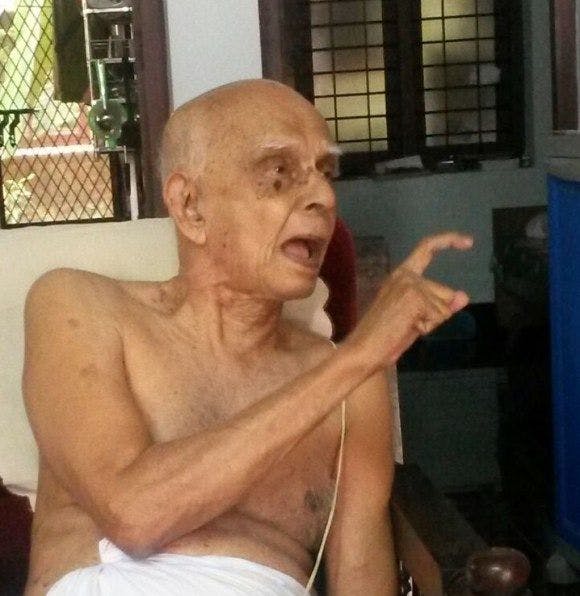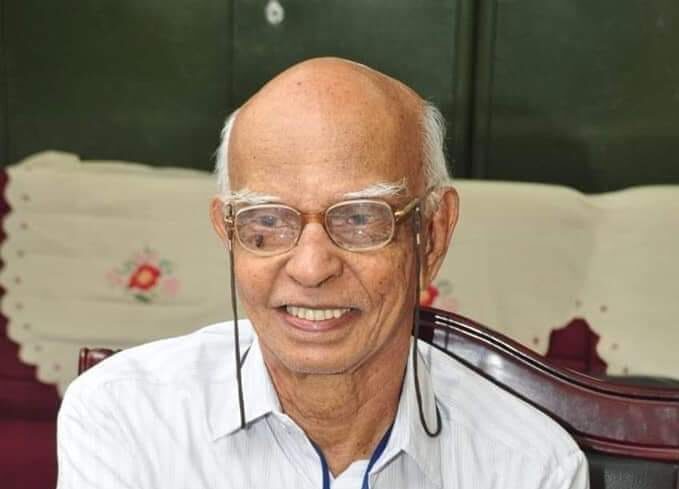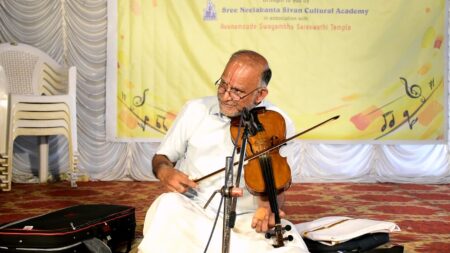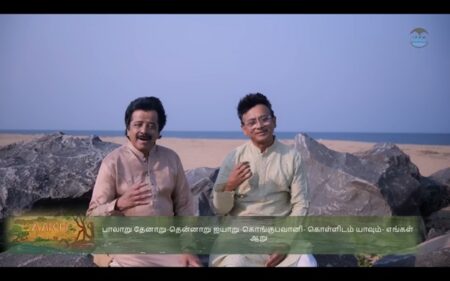Eminent critic and connoisseur of Kerala’s performing arts, Kanjoor Krishnan Namboodiripad was a paradigm of Vishnudharmottara’s famous story that explains the interrelationship of art forms.
The art and culture space in Kerala lost one of its greatest aesthetes when Kanjoor Krishnan Namboodiripad died yesterday night at the age of 97. Krishnettan, as he liked to be addressed by all irrespective of age, was a scholar, critic and great connoisseur of performing arts. From the aesthetic nuances of Carnatic music to the intricacies of dance choreography and the difference of various styles in dance, he touched upon every stream of classical art forms.
Krishnan Namboodiripad was born in the remote hamlet of Chunangad, off Ottappalam in the year 1924. A drop out from the eighth standard, the only systematic training Krishnettan had was in music under Palakkad Rama Bhagavathar that too not for a long time. It was the Mohiniyattam workshop organised by Kerala Sangeetha Nataka Akademi in 1990 that served as the launchpad for Krishnettan. Though uninvited, he attended the workshop out of curiosity born out of his ‘encounter’ with the dance form in Kalamandalam during 1950s. After listening to the keynote address by the director of the workshop in the opening seminar, Krishnettan expressed his desire to participate in the discussions, again uninvited, to the organisers. He seized this opportunity to speak about the relation between colour and emotions based on Oswald Colour Theory. It was the colour of the Mohiniyattam costumes that he had in his mind. His speech appeared Greek to the entire congregation of participants including scholars and outstanding performers. As he was quoted in the news column that appeared in Indian Express the next day, there were queries from all corners about this scholar hitherto unheard of. And thereafter, Krishnettan turned a cynosure in the cultural circles.

Thereafter, he was a regular invitee to all seminars, workshops, festivals of dance, music and percussion ensembles until he was bed-ridden four years ago. Wherever he went, he made scathing attacks on the undesirable craze of the artistes for innovations without comprehending the essence of the contributions of the forebears. What made him think along the untrodden paths was his multidisciplinary approach to each form of art, whether it is performing or plastic. It was his inimitable intellectual acumen that compelled him to plough a different track that was wholly based on scientific principles. So, wherever he spoke, his ideas were well received by the younger generation since they were exposed to modern education. And he liked them. The three-day celebrations of his navathy in 2014 were organised by this group of youngsters for whom he was a lodestar in the firmament of arts. Scores of research scholars especially the dancers from Kerala Kalamandalam, after it became a Deemed University, used to throng his home to discuss the topic of their research. Others came just to listen to his words of wisdom.
A self-taught scholar
He was a self-taught in all other areas including the Ham radio, electronics, photography, painting, computer, etc. perhaps it was only in Morse-code that he had to undergo formal training. It was with the baggage of knowledge gained in all such varied branches that he went to Kalamandalam to gain a hands-on contact with Kathakali sangeetham, though he had enough exposure to performances of the doyens of those days. Since Kalamandalam Nambissan was on leave he could not realise his ambition. But he was invited to the dance Kalari during the incipient stages of development of Mohiniyattam and Bharatanatyam from early ‘50s. His strong footing in Carnatic music helped the teachers to streamline many items. It was as suggested by Krishnettan that the Swati varnam Dhani samajedra gamini was selected to be choreographed by Sathyabhama for whom he has done nattuvankam many times. But it was here that his observations of dance as related to painting, sculpture and photography originated. He speaks at length about these unique conclusions.
Variations in sailees (schools) in classical art forms, training and learning in Kalari, ritualistic and artistic components in classical arts, “gayaka vritti’ and ‘bhagavatha vritti’, aesthetics of dance choreography, aesthetics of a Carnatic music concert etc. are the topics on which he has spoken at length with examples. A biographical sketch of Krishnettan and his thoughts on art were compiled into a book- ‘Krishnayanam”– Kanjoorinte Kala Chinthakal- by Swetha Mangalath and was released last year.




